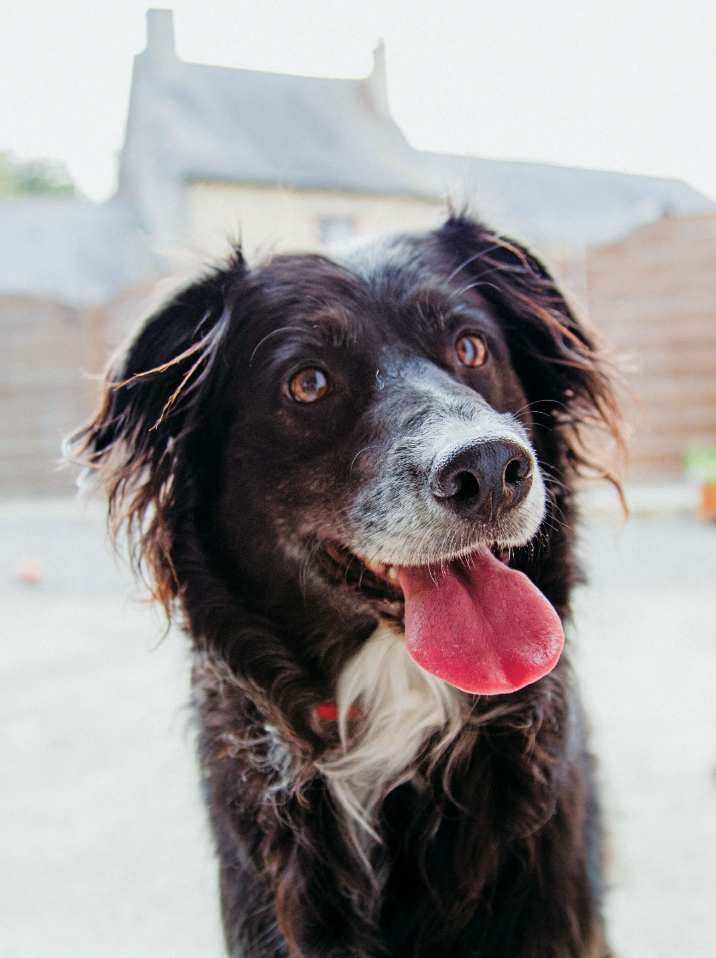By Dustin Rhodes and Nicole Rivard
Cover photo by Randal Ford
When everybody was excited about how U.S. shelters were cleared out during the Covid-19 pandemic, Laurette Richin, founder of Long Island Bulldog Rescue, was bracing for the other shoe to drop.
And now it has.
The U.S. has a crisis of abandoned cats and dogs, and euthanasia rates are at a three-year high. About 51,000 dogs were euthanized from January to July 2023, a 37% increase from the same period in 2022, according to data submitted by organizations that report to Shelter Animals Count.
The Covid-19 pandemic created a perfect storm for public and private shelters. In the initial months of the pandemic, there was reduced spay and neuter access. Now, post-pandemic inflation costs are hurting people’s ability to afford veterinary care, food and supplies.
Another variable is a lack of affordable, pet-friendly housing. Then, there are the people unable—or simply unwilling—to get training for animals who are having a hard time adjusting to post-pandemic life after years cooped up with their owners.
“We have more unsocialized, insane dogs than ever before. They were used to being home with everybody, and then everybody left,” Richin said. “And people don’t want to bother. It’s just a nightmare.”
Richin admitted that for the first time, she can’t take care of all the dogs who need care.
“Veterinary expenses have more than doubled since 2020, and that’s a huge part of it. We have dogs that need awfully expensive interventions, and people have neglected them more,” Richin said. “If we didn’t get a significant donation over the summer, I would’ve had to shut down completely for a few months. It’s really tough out there.”
When the going gets tough for homeless cats and dogs, there is no debate that spay/neuter is the best tool to combat overpopulation and euthanasia of unwanted animals.
“Some 2.7 million pets did not get spayed and neutered during the pandemic,” said Leah Craig Feiser, the executive director of Asheville, N.C.-based Brother Wolf Animal Rescue—one of the largest rescues in the Southeast.

“We’ve never encountered a problem this massive before, and it may affect us for 10 years—all those unwanted litters. Spay and neuter was the original solution for the movement to save dogs and cats…and it still is.”
When Friends of Animals encountered vets dropping out of our national low-cost spay/neuter certificate program during the pandemic, we doubled payment to participating vets to reflect the new realities of costs. FoA’s certificates have helped alter more than 2.8 million dogs and cats since 1957.
FoA is also offering donors the opportunity to underwrite the cost of a certificate by donating one, which will then be distributed to an individual or shelter.
A closer look at what’s happening
Melanie Sobel, director of the Denver Animal Shelter, noted that one reason vet expenses are on the rise is big corporations are buying out independent practices and hiking up prices.
“It’s all about the corporate dollar. Compounding the problem is vets are getting disgusted and quitting, which is contributing to a veterinarian shortage,” she said.
Feiser agrees that there aren’t enough veterinarians to cope with multiple crises and pointed out that surrendered animals almost always arrive with serious health issues that require expensive treatment, which underscores that people are struggling with the cost of vet care.
“Seeing animals being surrendered with so many serious issues is a brand-new issue for us, at least at this scale,” Feiser said.
In Denver, the number of cats and dogs being surrendered is soaring. As of the end of August, 1,184 dogs and cats had been given up by their owners so far this year, compared with 1,129 in all of 2022. And euthanizations have hit a five-year high. As of Aug. 27, DAS had already euthanized 866 dogs and cats this year.
A major factor is the housing crisis—Denver is among cities across the country where housing costs have outpaced wages.
“People can’t afford housing, let alone housing that allows pets. People are moving into apartments, and they can’t have a dog, or they can’t have a dog over 40 pounds because the landlord won’t allow it,” Sobel said.
Like LIBR’s Richin, Sobel is seeing an uptick in behavioral issues, especially among large adolescent dogs.
“We are surmising a lot of people got puppies during the pandemic,” she said. “They were not taking them out doing normal things, so the dogs weren’t properly socialized, or people had to go back to work, so now they’re gone all day. Some people can’t afford training.”
Sobel notes that some shelters in the area that practice no-kill policies are adopting out behaviorally unsound dogs—ones showing conduct that threatens the safety of people and other animals or who have severe separation anxiety—to unknowing families, to get their euthanasia numbers down.
“Some families don’t want a ‘project’, they want a dog they can take to their kid’s soccer game…so they give them up because they can’t handle it,” Sobel explains. “It brings such heartache when they relinquish them, and then they think, ‘I’m never doing that again. I am going to a breeder.’ So, this is hurting animals in all shelters who don’t have behavioral issues.”
One privately-funded Denver-based no-kill shelter also stopped taking in strays for about 2 ½ months last spring and put people on waiting lists for surrenders, and DAS’ intake numbers have dramatically increased as a result. As a municipal shelter, DAS is open-admission and legally required to accept any animal who comes through the door.
“The public is having the door shut in their face. It would be like kids in foster care going to a social service agency and it saying, ‘We are full, so no we can’t take them—figure it out yourselves.’ There must be a social service safety net for animals, and DAS is that,” Sobel said.
Turning the tide
DAS recently hired its first social worker to bolster its already proactive approach to pets being surrendered.

The social worker joins the DAS Community Engagement Services team, which through door-to-door outreach, community events and referrals from outside organizations, offers free and low-cost pet medical services, supplies, food, leashes, grooming and transportation to pet owners in under-resourced parts of the city.
“We meet community members where they are, rather than waiting for them to come to us. It’s rare for a government municipal agency to get the funding that we should. However, Denver gives us resources. That’s what makes our agency a role model; that’s why I came here,” Sobel said.
This team helps individuals who face many barriers to accessing important services for the animals they love. About 84% of these individuals’ animals have never seen a veterinarian.
“Our goal is to preserve the human-animal bond. Animals are an integral part of the family, and both people and their pets benefit when they can stay together,” Sobel said. “Also, we educate each person along the way—perhaps they shouldn’t consider another animal until they have A, B and C lined up.”
Although the spike in euthanasia weighs on her, Sobel is optimistic the tide will turn. She acknowledges that declining shelter euthanasia rates has been one of the success stories of the animal advocacy movement over the last several decades.
“This is a bump in the road because of the pandemic—we are going to get back to progressing how we were through education and spay/neuter,” Sobel said.
She pointed out that when she started 24 years ago at Chicago Animal Care and Control, they took in 30,000 animals a year as opposed to the 6,500 DAS is now taking in.
“It was much worse as far as the numbers of animals who were euthanized. Overall, we’re changing the view on animals—they’ve become family members. That’s what keeps me going.”
TAKE ACTION
- Support FoA’s low-cost spay and neuter program. FoA regularly distributes spay/neuter certificates to rescues and shelters throughout the country who need them. Visit our website, www.friendsofanimals.org, or call 800-321-PETS
- “Adopt, don’t Shop” is more essential than ever. Educate family and friends that they can often find specific breeds at shelters, rather than go to breeders. And there are many breed-specific rescues.
- Foster a dog or cat or volunteer at your local humane society, shelter or rescue. Volunteers may help walk animals, assist with adoption events and serve as community advocates.
- Many cities sponsor foster programs for people experiencing health crises—where volunteers care for animals while someone is in the hospital or receiving cancer treatments, etc. This helps keep animals out of shelters.
- Consider a donation to the municipal, open-admission shelter in your community, as they typically get the least funding and support.

